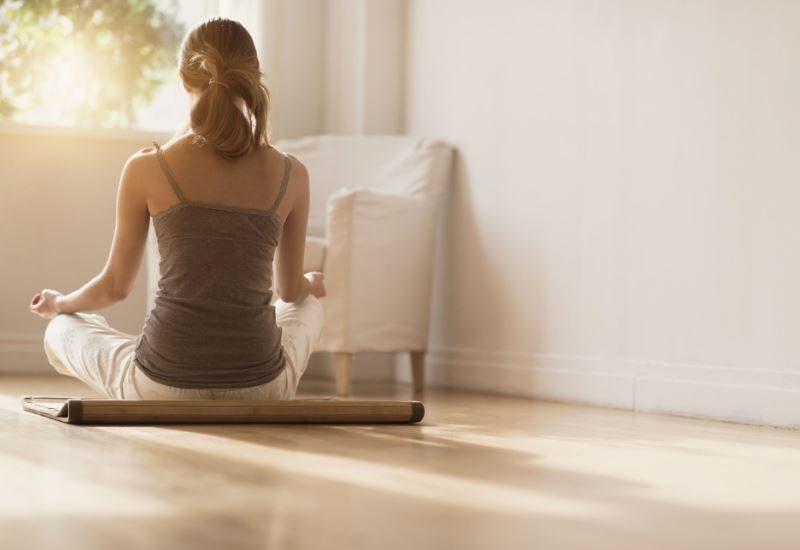A Zen state of mind, nirvana, enlightenment, mantras and the works! We have all come across these words and practices before. More often than not, we associate these terms with far-eastern philosophy, something practiced by sages high up in the Himalayas.
However, these practices, all part of the science of meditation, are not so much out of our reach. With determination and will power, these can be instilled in our daily routines. Just as the way you eat, breathe and sleep, meditation can become a mainstay in your life. All it demands is few minutes of your daily devotion.
Given our busy schedules, finding an oasis of calm and a suitable time to shut out from our worldly adversities can be difficult. However, this brief guide below will help you accomplish the art of meditation, even if you’re starved for time.
Read on to find out more:
The 20-minute formula
Meditation is no rocket science. It requires zero tools and you do not have to trek to another place to practice it. To start with, you will need to chalk out a schedule for the act. Reserve 20 minutes of your time each day and dedicate it to deep breathing. It could be in the morning, mid-day or after working hours. Choose any time that you deem suitable and get on with the practice. If 20 minutes at a stretch is too much to ask, you can divide it into 10 minutes of meditation twice a day.
For example, if you wake up at 6.30am every day, try pushing ahead your alarm clock to 6.10am. Start off with your bodily functions and follow it up with a session of relaxed breathing in a quiet corner of your house. Allow all that morning sunshine to reflect in. After all, getting in some vitamin D while meditating will only double the overall benefits.
How to meditate
The discipline is not just one component — it is a branch that contains a range of activities. If you thought it was all about mindful breathing, then you are only skimming the surface of this ancient practice. However, deep breathing is a good starting point for novices. Follow these simple tips below to ace the technique of meditating through breathing.
- Sit or lie comfortably. You may do this on a comfortable chair, or just on your floor.
- Close your eyes and do not allow your mind to wander towards everyday woes.
- Make no effort to control the breath; simply breathe naturally.
- Focus your attention on the breath and on how the body moves with each inhalation and exhalation. Notice the movement of your body as you breathe. If your mind wanders, return your focus back to your breath.
Enhance your experience
Meditation does not have to be boring. Step up your Zen game by adding in some variety to your practice. Once you’ve honed the skills of meditating via breathing, inject new elements such as music, mantras or simply a Yoga mat to get you more attuned to the regime.
Simple yoga asanas such as the pranayama group of breathing exercises will add more vigour to your daily breathing habit.
Below are three yoga breathing techniques you can imbibe in your 20-minute routine if the repetition is making things dreary.
Remember though, these are more advanced breathing techniques which should be tried only after you have practised the above basic techniques and they may need the assistance of a professional practioner.
1. Dirga Pranayama
The Dirga Pranayama, or Complete Breath, has three parts. For this type of breath, you inhale through your nose, filling your belly first. Then, you fill your chest, and finally your lower neck. Then you exhale, starting from your lower neck, then out of your chest and finally your belly.
2. Ujjayi Pranayama
Ujjayi Pranayama or Warrior’s Breath is a more powerful form of breathing. You breathe in and out through your nose. While exhaling, you want to push the air up through the back of your throat, making an “h” sound — but keep the lips sealed.
3. Kapalabhatti Pranayama
Kapalabhatti Pranayama is also known as the Skull Shining Breath. The focus of this breath is on the exhale, which is short and forceful. You are trying to push the air out of your belly as fast as possible by contracting your abs. Once you force the breath out, simply let the inhale happen without any effort. Both the inhales and the exhales move through your nostrils, not your mouth. This is a short, quick style of breathing, which means that it can give you energy.
Perks of the practice
As you make meditation an indispensible part of your life, you will notice the beneficial results it yields. Apart from making you a calmer, more content person, it has an array of short-term benefits including lower blood pressure, improved blood circulation, lower heart rate, less perspiration, slower respiratory rate, less anxiety, lower blood cortisol levels, release of feel-good hormones, less stress and deeper relaxation.
In Buddhist philosophy, it affords a deeper meaning — the ultimate benefit of meditation is liberation of the mind from attachment to things it cannot control, such as external circumstances or strong internal emotions.
So take a deep breath and relax!








